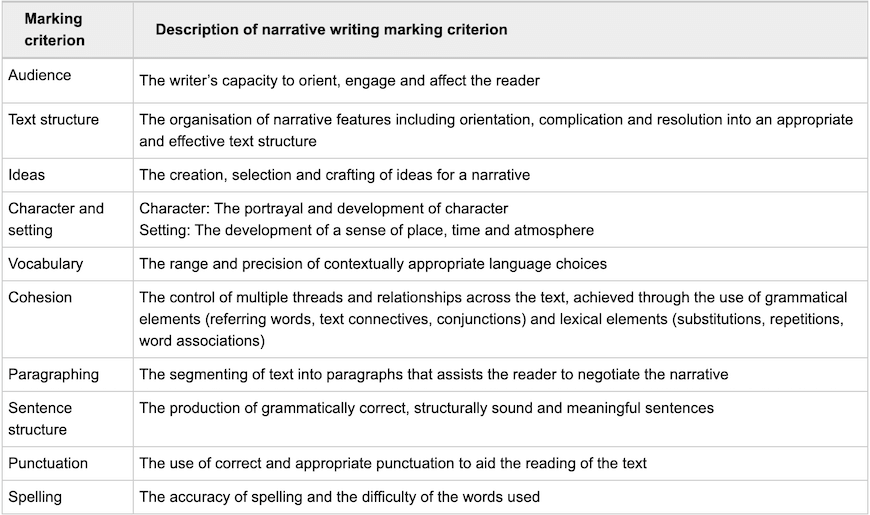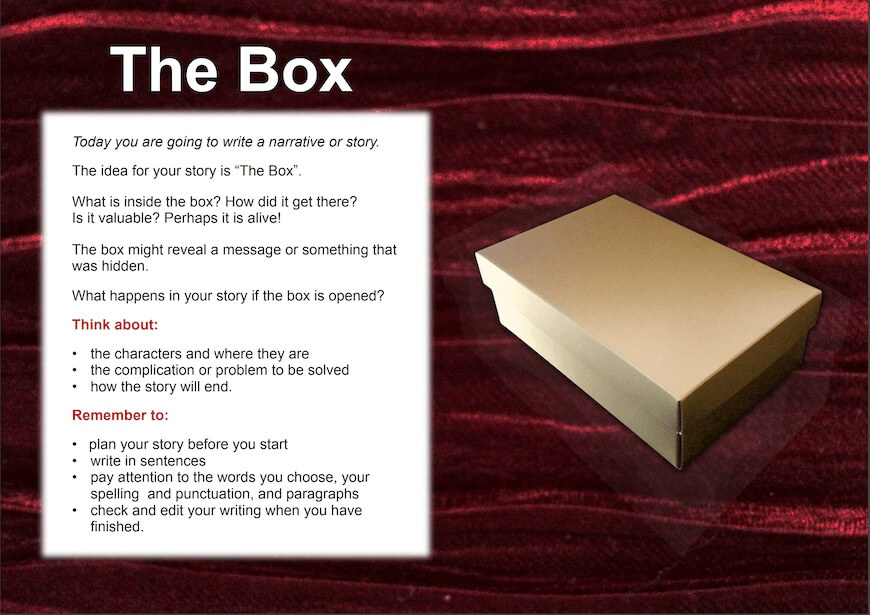Year 3 English
Year 3 English tutoring at Matrix will help your child improve their reading and writing skills.
Learning methods available
Select a year to see available courses
Does your child struggle with creative writing? This article will help you both work together so they can write top Band NAPLAN narratives.

Join 75,893 students who already have a head start.
"*" indicates required fields
You might also like
Related courses
The Year 3 NAPLAN Writing Test is one of the first experiences students have in constructing a narrative. Parents commonly cite difficulties helping children develop creative writing as one of their biggest stressors. What does creative writing need to include? What makes good creative writing? How do I evaluate my child’s writing? The list of questions is endless! In this article, we’re going to give you the solutions to Year 3 creative writing pain points.
The Year 3 NAPLAN writing test requires students to write a narrative – commonly referred to as creative writing – or persuasive text in response to a prompt. Since 2015, students in Years 3 and 5 have received different prompts to students in Years 7 and 9. In this article, we’re going to look at the creative writing (officially called Narrative Writing) section.
Common student issues with the task include:
So, what do all of these issues have in common? Students are always full of great ideas – it all comes down to being able to select, order, and convey these ideas in a way that is considerate of the reader.
By beginning to ask these questions, students learn to appreciate reader engagement which is one of the hallmarks of excellent creative writing!
Learn with Matrix+ Online
Expert teachers, comprehensive resources and one-to-one help. Help your child develop strong skills for English, Maths and the OC test, wherever you are.
The 2020 NAPLAN Review has shown declining performance in writing proficiency among Australian students in Years 7 to 9.
Ensuring your child has a leg-up in Year 3 is important to prevent them from falling behind on such an essential skill. Looking further into the Australian English Curriculum, creative writing is a consistently nurtured skill that continues to be addressed throughout High School.
While students struggle to learn what appears to be a brand new skillset, they will have encountered plenty of creative storytelling at the movies, on TV, or in books. Parents also find students beginning to tell their own stories – describing a funny encounter or recounting their school day.
These are all rudimentary but fundamental steps towards becoming a creative writer.
Encouraging students to recognise their existing experiences with story creation is the first step to writing a top Band narrative.
Diverging from creative storytelling skills, many students have trouble with grammar and examination experience. As an indicator of mature writing, Year 3 students need to learn to focus on consistency. Basic grammatical errors are not as much of a concern as are deviations in perspective and tense.
Students need to consistently use:
Most students will find first person and past tense the most natural way to write. While there are the second person and other tenses, students should avoid using these until they have better control over their writing.
Time management is the most important exam skill for Year 3 NAPLAN sitters.
Younger students find it especially difficult keeping an eye on their limited time and mismanagement can make or break even the most adept writer. Parents should work with children to develop a plan to prepare them for the exam day.
Students are given 40 minutes for the entire exam, so setting a benchmark for planning time, orientation, complication, resolution and editing time is ideal.
Our recommendation to students is to aim to divide their time as follows:
While telling students to spend a quarter of the exam planning and editing may seem unnecessary, it’s important to remember that markers look for quality over quantity. An excellent 400-500 word narrative will always score higher than a confusing and repetitive 600-word narrative.
When planning, students should consider the structure of their story.
For editing, students must learn to looking for mistakes in spelling, punctuation, paragraphing, and sentence structure.
It’s not just students that struggle, parents also have difficulty providing feedback on creative writing. Evaluating creative writing is a subjective process. So, when it’s your child’s writing it can be hard to offer constructive feedback without overwhelming them. That’s why it’s important for parents and students to have a clear understanding of the marking criteria for NAPLAN narrative writing.
The NAPLAN marking criteria offers 10 points of consideration when marking Narrative Writing pieces:

ACARA offers category descriptors of what a top band mark for each section needs to include. Parents can use the guide as a scaffold, working through each section and giving suggestions on how to achieve the given criteria.
There is no easy recipe for a top Band creative for Year 3 NAPLAN.
Our solution is to break down this complex task into simple sections with achievable goals. We like to think of creative writing as a process of brainstorming, planning, and structuring. Breaking down these processes into a series of open-ended questions can turn the writing process into a fun and engaging activity.
The goal is to practise going through this process until it becomes a subconscious process for our young writers!
Every NAPLAN creative writing test begins with a writing prompt. These prompts typically direct students to think about an object, place, or idea. Rather than thinking about the prompt as a starting point for their story, students should ask themselves the following questions for the brainstorming phase:

The best creative writing is detailed and descriptive. Writers are better placed to do this if they use their personal experiences with the subject as the basis for their writing.
The planning phase of the creative writing process involves combining the given prompt with characters and setting.
As Year 3 students have limited experience with creative writing, it is better to focus on a maximum of one or two characters and settings
This allows students to give greater depth to each, taking more time to develop the character and describe the setting.
A character, simply put, is the individual that experiences the events happening in the story. It is often easier for younger students to write in first person, thinking from the perspective of the main character.
The students also need to think about a compelling setting (if this isn’t already dictated by the prompt). The easiest settings to describe are places that the student has experience with such as a favourite park, school, or the beach.
Students should ask themselves the following questions:
Now that the student has brainstormed ideas and a plan, they can move on to the structuring phase. The student can begin to think about creative writing as a chronological process with a beginning, middle, and an end. Here, the student needs to consider which events happen where and why they want to arrange their story in this way.
The beginning is the orientation – this is where we introduce the characters and the setting to orientate the reader. This section of the story should be the most description heavy.
Students should ask themselves, what can my character see, hear, feel, smell, and possibly even taste?
The beginning of a story can be thought of as a flat plain before a mountain, the middle is the uphill battle to get to the mountain’s peak.
This middle section of the story is the complication. As the name suggests, there needs to be a problem or obstacle that the character needs to overcome. Students need to consider how their character will overcome these obstacles on their journey up this proverbial mountain.
As their writing matures, students can begin to consider their character’s reactions to obstacles and how this shows what kind of person the character is – this is called characterisation.
The end of a creative writing piece consists of a resolution. By this time, the character has achieved their goal and is heading back down to the bottom of the mountain. Students will need to consider how their character has changed as a result of the challenges they faced – what has the character learned from their experiences?
While our guide aims to be a convenient point of reference for parents, the next step is conveying this information to your child. We’ve developed a narrative writing study pack that works children through each of the processes described in this article. Use our study pack to guide your child through the creative writing process using a hands-on and engaging activity.
Written by Alfred Cho
Alfred Cho studies at the University of Sydney undertaking a Bachelor of Advanced Studies in Media and Communications and a Bachelor of English. Alfred is an English Teacher at Matrix with a keen interest in film, radio, and TV production.© Matrix Education and www.matrix.edu.au, 2023. Unauthorised use and/or duplication of this material without express and written permission from this site’s author and/or owner is strictly prohibited. Excerpts and links may be used, provided that full and clear credit is given to Matrix Education and www.matrix.edu.au with appropriate and specific direction to the original content.